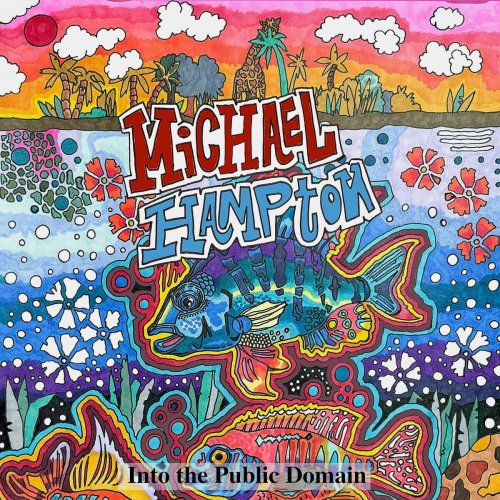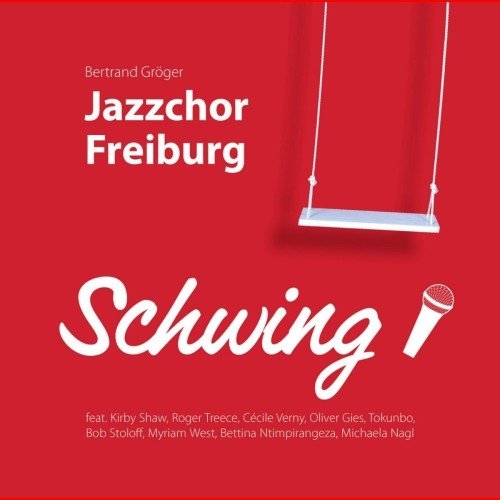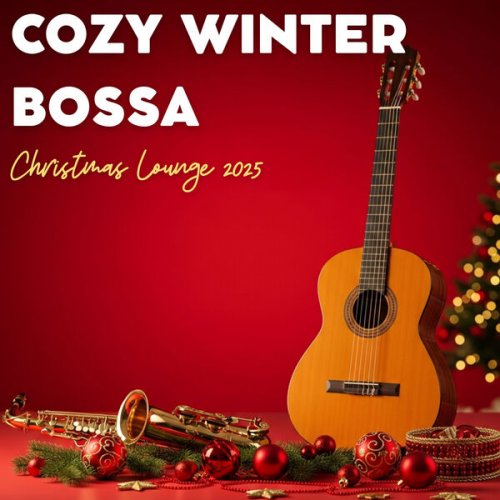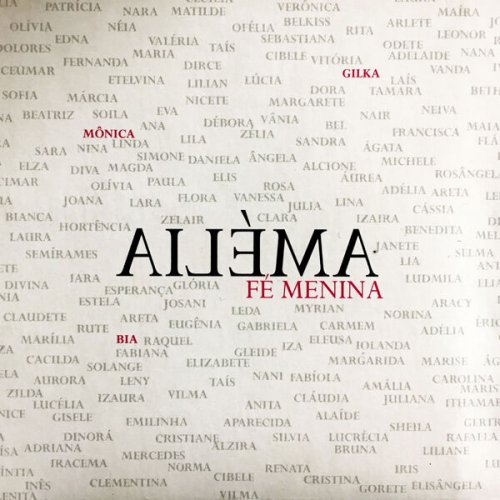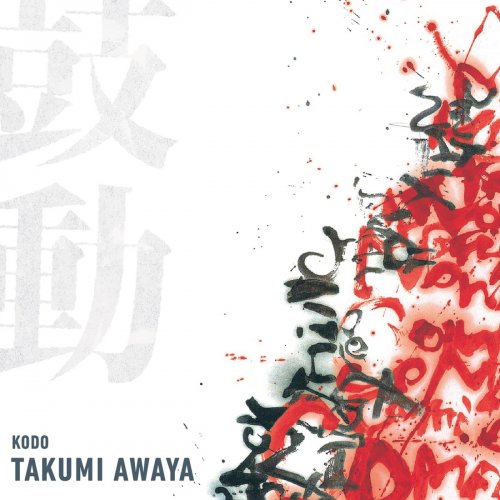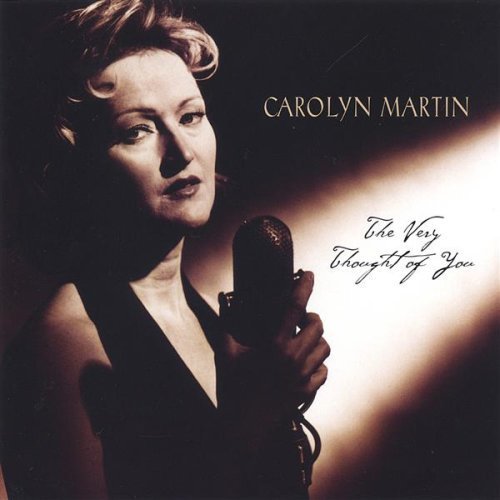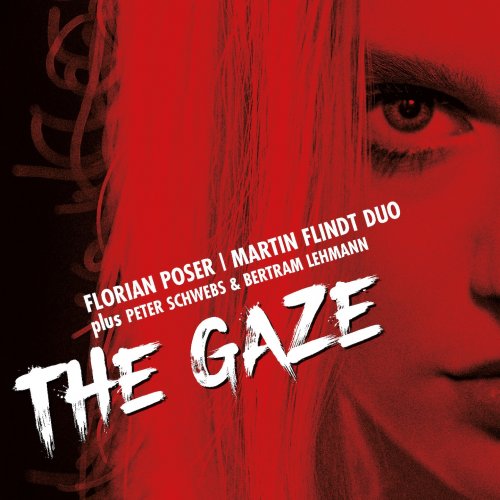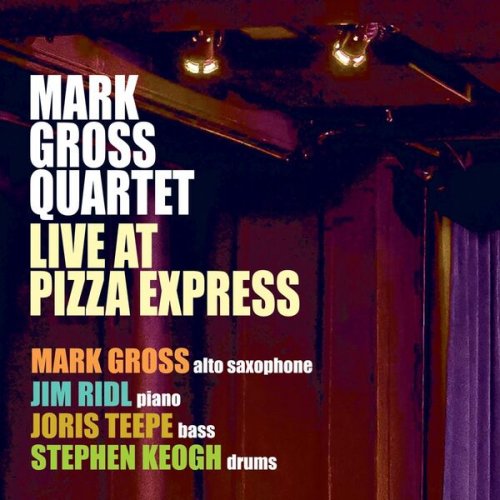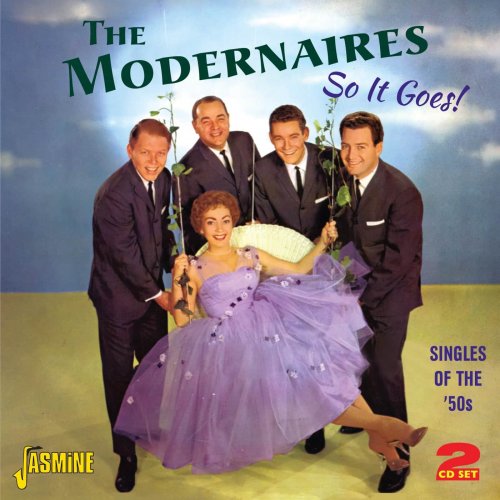Art Zoyd - Eyecatcher: L’Homme à la Caméra (2011)
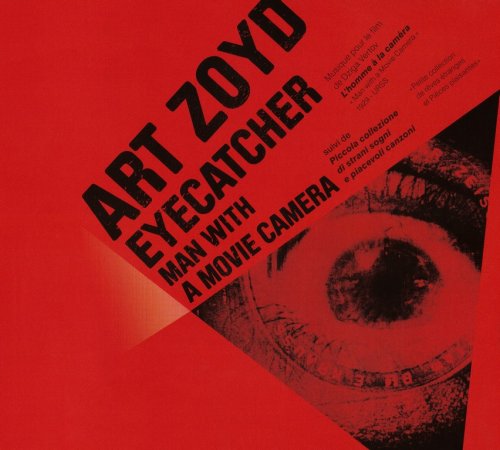
Artist: Art Zoyd
Title: Eyecatcher: L’Homme à la Caméra
Year Of Release: 2011
Label: In-Possible Records #AZ 2011
Genre: Avant-Prog, Abstract, Electronic, Post-Modern, Stage & Screen
Quality: EAC Rip -> FLAC (Img+Cue,Log) / MP3 CBR320
Total Time: 2CD (01:05:04 + 00:50:00)
Total Size: 624 / 276 Mb (Full Scans ~ 189 Mb)
WebSite: Album Preview
Title: Eyecatcher: L’Homme à la Caméra
Year Of Release: 2011
Label: In-Possible Records #AZ 2011
Genre: Avant-Prog, Abstract, Electronic, Post-Modern, Stage & Screen
Quality: EAC Rip -> FLAC (Img+Cue,Log) / MP3 CBR320
Total Time: 2CD (01:05:04 + 00:50:00)
Total Size: 624 / 276 Mb (Full Scans ~ 189 Mb)
WebSite: Album Preview
Music for the silent film 'Man With a Movie Camera' (1929 - USSR) by Dziga Vertov, followed by 'Petite collection de rêves étranges et pièces plaisantes'.
French avant-prog unit Art Zoyd formed in 1969 around the core of bassist Thierry Zaboitzeff, percussionist Jean-Pierre Soarez, and violin player Gérard Hourbette, with guitarist Rocco Fernandez, pianist Patricia Dallio, percussionist Daniel Denis (who later formed Univers Zero), and a changing lineup of half-a-dozen additional instrumentalists. In 1975, Zaboitzeff took over the group and changed its musical direction. The personnel would be narrowed to include two violins, electric bass, and trumpet, as evidenced by their debut full-length, Symphonie Pour le Jour Ou Bruleront les Cités, self-released in 1976. Its reception won them an opening slot on a tour with Magma. Released in 1979, Musique Pour l'Odyssée marked their debut on France's Atem Records and expanded the studio lineup to include saxophone, cello, viola, percussion, oboe, and bassoon. That same year, Art Zoyd joined the Rock in Opposition movement (founded by Chris Cutler), which also included Univers Zero, Henry Cow, Art Bears, Samla Mammas Manna, Stormy Six, and three others.
Commencing in 1980, Art Zoyd began to tour all over Europe, a period that lasted four years. In 1982, the acclaimed double-length Phase IV was issued on Recommended Records, cementing their place among other European bands on the musique nouvelles scene, while English-speaking observers categorized them as avant-prog or art rock. Les Espaces Inquiets followed in 1983, and the following year Zaboitzeff issued his debut solo album, Prométhée. The score for Roland Petit's ballet Le Mariage du Cial et de l'Enfer, released in 1985, marked a turning point for Art Zoyd, who began to immerse themselves in research, creating music for visual arts (both dance and theater), and performing live soundtracks for silent films. In 1988 they were invited to create a live soundtrack for F.W. Murnau's silent film classic Nosferatu. A studio version was released in 1990 on Ear-Rational Records.
With a revolving cast, Zaboitzeff and Hourbette continued the group into the 1990s, and toured Europe, the United States, Mexico, and Australia. They composed music for Murnau's Faust, which was issued as a soundtrack album in 1996 on Atonal. A year later, their score/soundtrack for Benjamin Christensen's 1921 film Häxan was issued to universal acclaim from critics. That same year, Zaboitzeff left the group (until a 2014 reunion), shifting Art Zoyd's focus more toward collaborating with other composers and artists. Among their collaborators were Gerard Pape, Heiner Goebbels, and Luc Ferrari. The live Ubique followed in 2001, performed by a massive ensemble including Hourbette, Dallio, Denis, and Mireille Bauer, a former member of Pierre Moerlen's Gong. There were 13 guitarists and 13 drummers among the personnel.
A year later, Art Zoyd, with Ensemble Musiques Nouvelles, issued Expériences de Vol, a triple-disc set of performances of compositions by 13 composers including David Shea, Jean-Luc Fafchamps, Giovanni Sollima, Ryoji Ikeda, and Hourbette. It was the first entry in an ongoing long-term collaborative project with Ensemble Musiques Nouvelles that eventually netted some 50 compositions/performances -- first played live and then recorded. Also in 2002, Art Zoyd released their recorded soundtrack to Fritz Lang's Metropolis. The music had been performed live with a newly restored print of the film. It featured new compositions by Hourbette, Kasper Toeplitz (who joined the band as a part-time composer), and Dallio. As part of the Festival Lille 2004, Art Zoyd premiered Armageddon, the first operetta for robots. The piece was accomplished in collaboration with Ensemble Musiques Nouvelles and robotics engineer Louis-Phillippe Demers. Les Champs des Larmes, an electronic oratorio by Hourbette and Toeplitz with visuals by Dominik Barbier, made its premiere in 2006; its score was released by In-Possible Records. Two years later, the label released the band's concert score for Jean Epstein's film The Fall of the House of Usher.
In 2011, Art Zoyd recorded their score for the Eyecatcher: Man with a Movie Camera project, which had premiered in 2007 using Dziga Vertov's 1929 experimental silent film and computer-generated images by Cecile Babiole. The score made use of a Stroh violin and a Theremin as bookends. In 2012, the score for Armageddon was released on In-Possible, and the music for Dangerous Visions, with the Orchester National de Lille conducted by Jean-Claude Casadesus, arrived in 2017. That fall, Cuneiform Records released a massive Art Zoyd retrospective entitled 44 1/2 Live + Unreleased Works. It consisted of previously unreleased live performance audio recordings; demo and experimental studio tracks; and video footage touching on various film, TV, and theater works. Included were 12 audio and two video discs. Chronologically, it covered Art Zoyd's history from 1969 up until their 44½ birthday concert at the 2015 Rock in Opposition festival in Le Garric, France.
French avant-prog unit Art Zoyd formed in 1969 around the core of bassist Thierry Zaboitzeff, percussionist Jean-Pierre Soarez, and violin player Gérard Hourbette, with guitarist Rocco Fernandez, pianist Patricia Dallio, percussionist Daniel Denis (who later formed Univers Zero), and a changing lineup of half-a-dozen additional instrumentalists. In 1975, Zaboitzeff took over the group and changed its musical direction. The personnel would be narrowed to include two violins, electric bass, and trumpet, as evidenced by their debut full-length, Symphonie Pour le Jour Ou Bruleront les Cités, self-released in 1976. Its reception won them an opening slot on a tour with Magma. Released in 1979, Musique Pour l'Odyssée marked their debut on France's Atem Records and expanded the studio lineup to include saxophone, cello, viola, percussion, oboe, and bassoon. That same year, Art Zoyd joined the Rock in Opposition movement (founded by Chris Cutler), which also included Univers Zero, Henry Cow, Art Bears, Samla Mammas Manna, Stormy Six, and three others.
Commencing in 1980, Art Zoyd began to tour all over Europe, a period that lasted four years. In 1982, the acclaimed double-length Phase IV was issued on Recommended Records, cementing their place among other European bands on the musique nouvelles scene, while English-speaking observers categorized them as avant-prog or art rock. Les Espaces Inquiets followed in 1983, and the following year Zaboitzeff issued his debut solo album, Prométhée. The score for Roland Petit's ballet Le Mariage du Cial et de l'Enfer, released in 1985, marked a turning point for Art Zoyd, who began to immerse themselves in research, creating music for visual arts (both dance and theater), and performing live soundtracks for silent films. In 1988 they were invited to create a live soundtrack for F.W. Murnau's silent film classic Nosferatu. A studio version was released in 1990 on Ear-Rational Records.
With a revolving cast, Zaboitzeff and Hourbette continued the group into the 1990s, and toured Europe, the United States, Mexico, and Australia. They composed music for Murnau's Faust, which was issued as a soundtrack album in 1996 on Atonal. A year later, their score/soundtrack for Benjamin Christensen's 1921 film Häxan was issued to universal acclaim from critics. That same year, Zaboitzeff left the group (until a 2014 reunion), shifting Art Zoyd's focus more toward collaborating with other composers and artists. Among their collaborators were Gerard Pape, Heiner Goebbels, and Luc Ferrari. The live Ubique followed in 2001, performed by a massive ensemble including Hourbette, Dallio, Denis, and Mireille Bauer, a former member of Pierre Moerlen's Gong. There were 13 guitarists and 13 drummers among the personnel.
A year later, Art Zoyd, with Ensemble Musiques Nouvelles, issued Expériences de Vol, a triple-disc set of performances of compositions by 13 composers including David Shea, Jean-Luc Fafchamps, Giovanni Sollima, Ryoji Ikeda, and Hourbette. It was the first entry in an ongoing long-term collaborative project with Ensemble Musiques Nouvelles that eventually netted some 50 compositions/performances -- first played live and then recorded. Also in 2002, Art Zoyd released their recorded soundtrack to Fritz Lang's Metropolis. The music had been performed live with a newly restored print of the film. It featured new compositions by Hourbette, Kasper Toeplitz (who joined the band as a part-time composer), and Dallio. As part of the Festival Lille 2004, Art Zoyd premiered Armageddon, the first operetta for robots. The piece was accomplished in collaboration with Ensemble Musiques Nouvelles and robotics engineer Louis-Phillippe Demers. Les Champs des Larmes, an electronic oratorio by Hourbette and Toeplitz with visuals by Dominik Barbier, made its premiere in 2006; its score was released by In-Possible Records. Two years later, the label released the band's concert score for Jean Epstein's film The Fall of the House of Usher.
In 2011, Art Zoyd recorded their score for the Eyecatcher: Man with a Movie Camera project, which had premiered in 2007 using Dziga Vertov's 1929 experimental silent film and computer-generated images by Cecile Babiole. The score made use of a Stroh violin and a Theremin as bookends. In 2012, the score for Armageddon was released on In-Possible, and the music for Dangerous Visions, with the Orchester National de Lille conducted by Jean-Claude Casadesus, arrived in 2017. That fall, Cuneiform Records released a massive Art Zoyd retrospective entitled 44 1/2 Live + Unreleased Works. It consisted of previously unreleased live performance audio recordings; demo and experimental studio tracks; and video footage touching on various film, TV, and theater works. Included were 12 audio and two video discs. Chronologically, it covered Art Zoyd's history from 1969 up until their 44½ birthday concert at the 2015 Rock in Opposition festival in Le Garric, France.
~ All Music

Track List CD1:
Eyecatcher 2 - L’Homme à la Caméra
01. Red + Lanterne Magique: Rumeur [2:16]
02. Theatre [0:42]
03. Lemime [2] [1:40]
04. Lemime [2] + Orchestre [0:20]
05. Lanterne Magique: Nuit, Locomotive, Essieux [2:00]
06. Klein [0:28]
07. Trumpet 1 [2:01]
08. Station 1 + Lanterne Magique: Vitesse [1:06]
09. Soutien & Fanfare + Lanterne Magique: Eaux, Ruissellements [1:37]
10. Lanterne Magique: Eaux, Ruissellements – suite + Ondetech + Station 2 + Batterias 1 [5:24]
11. A l’Epoque, les Instruments Anciens Etaient... [0:11]
12. Metal-Moe [0:59]
13. Metal-Moe – suite + Lanterne Magique: Eau, Cordes, Roues + Thereminstar 2 + Station 3 [2:17]
14. Lanterne Magique: Reve de Locomotive + Troika [1:08]
15. (silence) [0:08]
16. Lanterne Magique: La Monteuse + Chambre Noire [2:24]
17. Chambre Noire – suite + Synthform + Lanterne Magique: L’?il-Camera + Station 4 + Insectes [7:27]
18. Percussion-Clavier, Orgues, Clavecin + Lanterne Magique: Autres Synthes, Chevaux + Synthform – suite + Batterias 2 + Lemime [2] [4:20]
19. Forges + Eaux Tourbillonnantes + Chambre Rouge + Station 5 [5:24]
20. Lanterne Magique: Jeux de Synthe [0:10]
21. Rage_Marxiste [0:37]
22. Rage_Marxiste – suite + Lanterne Magique: Hymne + Chambre Rouge – suite + Station 6 + Batterias 3 [3:25]
23. Calme [0:40]
24. Troika 2 [0:36]
25. Organoscope + Fanfares-Troika [1:36]
26. Lanterne Magique: Ragtime + Fanfares-Troika – suite + 2eme Bal de Zoydglub [2:05]
27. Rage_Marxiste + Lanterne Magique: Le Magicien + 2eme Bal de Zoydglub – suite [1:23]
28. Rage_Marxiste – suite + Lanterne Magiques: Derives + Vents & Marees [2:35]
29. Trumpet 2 [3:06]
30. (silence) [0:08]
31. Theatre de la Vie + Lemime [2] [6:50]
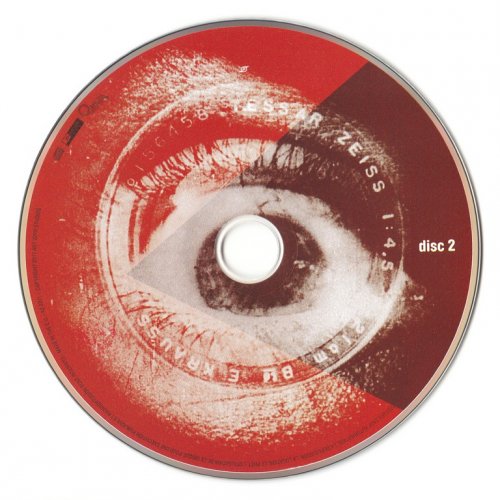
Track List CD2:
Eyecatcher 1
01. Sex-Fanfare [0:58]
02. Blind_Date + En Ce Temps-la les Instrumentes Anciens... [2:34]
03. Eblouissement + Lanterne Magique: Tourniquets / Resonnances / Preorchestre [2:28]
04. Chambre Noire 3 + Lanterne Magique: Rumeur [0:51]
05. Ahab [0:57]
06. Hysteria [3:16]
07. Thereminstar 1 [2:40]
08. Loin [2:00]
09. 1er Bal de Zoydglub [0:40]
10. Suspens [1:25]
11. Rage_Marxiste + Suspens – suite [0:49]
12. Fannia Canicularis, Percussion, Fanfare et Calme [2:47]
Petite Collection de Rêves Etranges et Pièces Plaisantes
13. Le Turc Mecanique [8:47]
14. La Puce Opiniatre [9:10]
15. Terminal II [5:55]
Personnel:
Laurent Dailleau - theremin & computer (2), "Serge" synthesizer (4)
YukariYamada-Bertocchi - keyboards & sampler (2)
Gérard Hourbette - sampler, percussion, electronics
Jérôme Soudan - percussion (2,3), sampler (2)
Nadia Ratsimandressy - ondes Martenot (2)
Iantha Rimper - acoustic, electric & Stroh violins (2)
Carol Robinson - clarinets (3)
Ulrich Krieger - saxophones (3)
Erik Baron - electric bass (3)
Carl Faia - electronics (live)
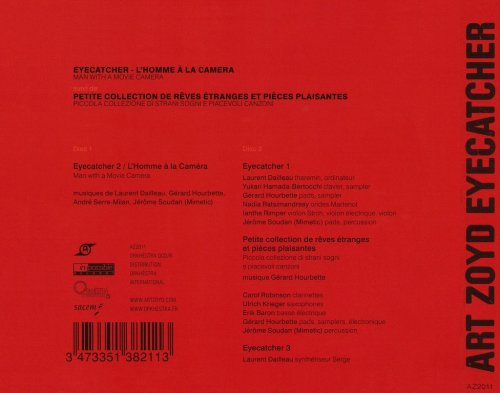
***************
